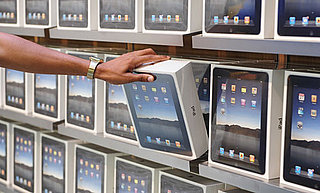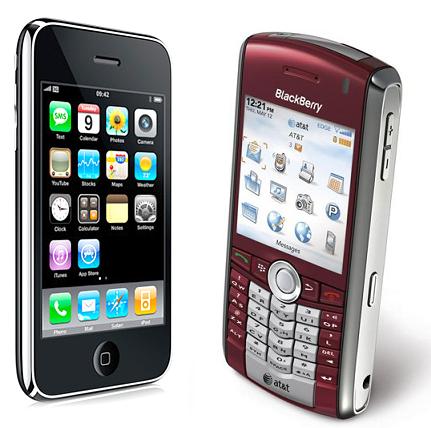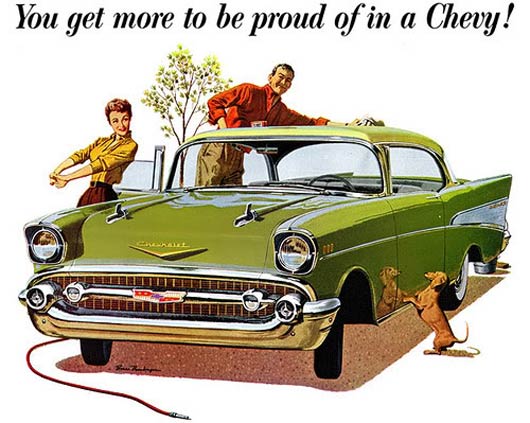 Go into any Best Buy or any other consumer electronics store and you’ll undoubtedly see a vast array of products that are barely distinguishable from each other. They may identical features, utilize the same technology, have the same performance measures, and even be offered at similar prices. Yet, you make a decision. You’re able to make a decision from a seemingly homogenous set of choices because products simply aren’t the sum of their parts and features. You may favor specific features (e.g. touch-screen), performance measures (e.g. storage), or even be set on price, but these are simply your priority and not your sole reason for purchasing. What I’m getting at is that a product is a composite that is greater than the sum, and it’s this composite that you’re buying. I think this is what separates Apple from the “non-Apples”, which seems like everyone else recently. Apple clearly gets the concept of creating a product composite that people instantly get what it is and what it does for them. It’s based on true empathetic understanding of their customer base, which, unlike pretty white boxes, is truly the foundation of the user experience design.
Go into any Best Buy or any other consumer electronics store and you’ll undoubtedly see a vast array of products that are barely distinguishable from each other. They may identical features, utilize the same technology, have the same performance measures, and even be offered at similar prices. Yet, you make a decision. You’re able to make a decision from a seemingly homogenous set of choices because products simply aren’t the sum of their parts and features. You may favor specific features (e.g. touch-screen), performance measures (e.g. storage), or even be set on price, but these are simply your priority and not your sole reason for purchasing. What I’m getting at is that a product is a composite that is greater than the sum, and it’s this composite that you’re buying. I think this is what separates Apple from the “non-Apples”, which seems like everyone else recently. Apple clearly gets the concept of creating a product composite that people instantly get what it is and what it does for them. It’s based on true empathetic understanding of their customer base, which, unlike pretty white boxes, is truly the foundation of the user experience design.So what is design? For this discussion, let’s say it’s the difference between the sum of the engineering and the resulting product. Admittedly, there are thousand holes in this overly simplistic formula, yet there is some value in using this as a mental model and I’ll explain why. Consider two products that are comparable on features, parts, and performance. Yet, they are not equal. They are not equal because the emergent property of design must be accounted for when considering the whole product. (Note: By “design”, I’m referring to the whole product experience and not just the aesthetic aspect of it) For example, one could compare any iPhone with any Blackberry to see that Apple created a much greater product by maximizing on design and not on more measurable factors, which are fairly similar. Yet, if this is so obvious, why can’t companies get it right? Why are so many companies failing to create compelling product experiences when they know it’s good for business?
One aspect that makes this so challenging is the straightforward and simple nature of measurable criteria such as features and performance. In fast-paced, competitive business markets such as the automotive, electronics, or software industries, it’s much safer to make investments on tangible measures. They’re easy to add, compare, increase, and compete upon (“Faster than the competition!”). They also make it easier to make decisions upon, helping determine what next year’s model or version will feature (“Now with 20% more stuff!”). Unfortunately, it doesn’t take an MBA to know that this type of arms race never ends well for anyone involved. In the process of trying to “out-measure” each other, the market is always cannibalized. It’s ongoing science fair where the gym is always destroyed by the competing volcanoes of baking soda.
Now let’s consider design again - It’s the art class down the hall from the science fair with the crazy kids that nobody gets. And unlike science, it’s just so hard to measure. Paint and canvas are relatively cheap, but they can come together to produce a priceless masterpiece. In fact, art is all about emergence. It’s not focused on aesthetics as much as it is focused on the emotions it evokes in its observers, which is really the essence of product experience design. Sure, Apple’s products look beautiful, but that’s a deceiving veil. I believe this is what many organizations misunderstand. They think that they can engineer a product and then “throw in some design”, but this is completely wrong. When done correctly, products are a fusion of design and engineering, of art and science. Think of an Aston Martin or latest Apple product and tell me where design ends and engineering begins. As I mentioned earlier, people buy composite products, not a collection of pieces and parts where design has been slapped on.
Now here’s the fun part: design is cheap. At least, great design is not necessarily more expensive than bad design. What’s the significance of that fact? If products are a composite of measurable engineering and emergent design, organizations would be best served by maximizing on design emergence while minimizing the engineering without lessoning the value of the whole. Quite simply, organizations need to understand the emergent property of design and strategic advantage of getting it right. They need to accept a little art at the science fair.




This comment has been removed by the author.
ReplyDeleteJuan - fantastic stuff. this is a very intriguing concept that is worth exploring. I've actually kicked a similar idea around quite bit that we actually look for the same traits in products as we do in people. we like products and people that are easy to communicate and interact with and understand, helpful and available when we need them, not pushy or manipulative in any way, flexible to whatever situations come up, and generally pleasing in appearance. I could go on and on but I think there's merit to this concept. I like where you went with this as far as Apple products.. there's an outward communication that you share through your purchase and usage of their products that it not unlike the message you send with the people you surround yourself with. lots more to think about on this!
ReplyDeleteolder post - I knew I had written about this!
ReplyDeletehttp://treilanderror.blogspot.com/2010/11/why-products-are-like-people-aka-my.html
back to nature back to green.Couldn?t be written any better. Reading this post reminds me of my old room mate! He always kept talking about this. I will forward this article to him. Pretty sure he will have a good read. Thanks for sharing!
ReplyDelete